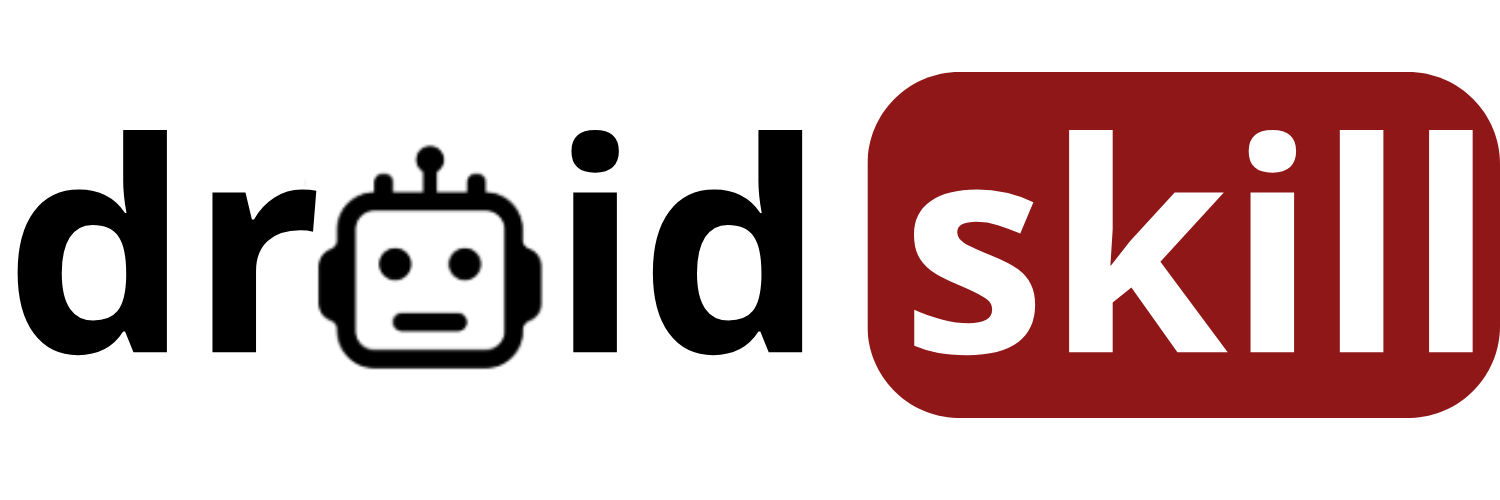Hey there, tech enthusiasts! Ever wondered which operating system, iOS or Android, is better for your digital wellbeing? It's a question that's been buzzing around the tech world for ages. We're diving deep into this topic, exploring the features, functionalities, and philosophies of both platforms to help you make an informed decision. Let's get started!
In today's hyper-connected world, our smartphones are more than just communication devices; they're our constant companions, our gateways to information, entertainment, and social interaction. But this constant connectivity can take a toll on our mental and emotional health. That's why it's crucial to choose a platform that not only meets our functional needs but also supports our digital wellbeing.
Understanding Digital Wellbeing
Before we delve into the specifics of iOS and Android, let's define what we mean by digital wellbeing. It encompasses our ability to use technology in a way that enhances our lives without negatively impacting our mental, emotional, and physical health. It's about finding a healthy balance between our online and offline lives, managing our screen time, and minimizing distractions.
iOS and Digital Wellbeing: Apple's Approach
Apple has been increasingly focused on digital wellbeing in recent years, introducing features designed to help users manage their screen time and reduce distractions. Let's take a look at some of the key features:
1. Screen Time
Screen Time is a built-in iOS feature that provides users with detailed insights into how they're spending their time on their devices. It tracks the amount of time you spend on each app, the number of notifications you receive, and how often you pick up your phone. This data can be eye-opening, helping you identify potential problem areas and make informed decisions about your tech usage.
Screen Time also allows you to set daily time limits for specific apps or categories of apps. For example, if you find yourself spending too much time on social media, you can set a limit of 30 minutes per day. Once you reach that limit, the app will be blocked, encouraging you to take a break.
Screen Time isn't just for adults; it's also a powerful tool for parents. With Family Sharing, parents can monitor their children's device usage and set limits on their screen time. This can help parents ensure that their children are using technology in a healthy and balanced way.
Search Screen Time on Playstore
Find Screen Time Alternatives on Playstore
2. Focus Mode
Focus Mode is another key feature in iOS designed to help you minimize distractions and stay focused on the task at hand. It allows you to create custom profiles that filter notifications and calls based on your current activity. For example, you can create a Work profile that only allows notifications from your work apps and contacts, or a Sleep profile that silences all notifications except for emergency calls.
Focus Mode is highly customizable, allowing you to tailor it to your specific needs and preferences. You can choose which apps and contacts are allowed to send you notifications, and you can even set up automatic schedules to activate Focus Mode at certain times of the day. This can be particularly useful for creating dedicated time for work, study, or relaxation.
One of the great things about Focus Mode is that it syncs across all your Apple devices. So, if you activate Focus Mode on your iPhone, it will automatically be activated on your iPad and Mac as well. This ensures that you're able to maintain focus and minimize distractions regardless of which device you're using.
Search Focus Mode on Playstore
Find Focus Mode Alternatives on Playstore
3. Night Shift and True Tone
Night Shift and True Tone are features designed to reduce eye strain and improve sleep quality. Night Shift automatically adjusts the color temperature of your display to warmer tones in the evening, reducing the amount of blue light emitted. Blue light has been shown to interfere with sleep, so reducing it can help you fall asleep more easily.
True Tone, on the other hand, adjusts the color and intensity of your display to match the ambient lighting in your environment. This makes the display easier on your eyes and reduces eye strain, especially when using your device in different lighting conditions.
Both Night Shift and True Tone are subtle but effective features that can make a big difference in your overall digital wellbeing. By reducing eye strain and improving sleep quality, they can help you feel more rested and energized throughout the day.
Search Night Shift on Playstore
Find Night Shift Alternatives on Playstore
Android and Digital Wellbeing: Google's Approach
Google has also been actively working to improve digital wellbeing on Android. Let's explore some of the key features they've introduced:
1. Digital Wellbeing Dashboard
The Digital Wellbeing Dashboard is Android's equivalent of Screen Time. It provides you with a comprehensive overview of your device usage, including the amount of time you spend on each app, the number of notifications you receive, and how often you unlock your phone. This data can help you understand your digital habits and identify areas where you might want to make changes.
Like Screen Time, the Digital Wellbeing Dashboard allows you to set daily time limits for specific apps. You can also set a Wind Down schedule, which gradually dims your screen and switches to grayscale mode in the evening, helping you prepare for sleep.
The Digital Wellbeing Dashboard also includes a Focus Mode feature, which is similar to iOS's Focus Mode. It allows you to pause distracting apps, preventing them from sending you notifications and tempting you to open them.
Search Digital Wellbeing Dashboard on Playstore
Find Digital Wellbeing Dashboard Alternatives on Playstore
2. Focus Mode (Android)
As mentioned above, Android's Focus Mode allows you to pause distracting apps, preventing them from sending you notifications and tempting you to open them. This can be incredibly helpful when you need to concentrate on work, study, or any other task that requires your full attention.
You can choose which apps to pause, and you can even set up automatic schedules to activate Focus Mode at certain times of the day. This allows you to create dedicated time for focused work or relaxation, without being constantly interrupted by notifications.
One of the key differences between Android's Focus Mode and iOS's Focus Mode is that Android's Focus Mode allows you to choose whether to completely block the app or simply pause notifications. This gives you more flexibility in how you manage distractions.
Search Focus Mode Android on Playstore
Find Focus Mode Android Alternatives on Playstore
3. Bedtime Mode
Bedtime Mode is designed to help you wind down and prepare for sleep. It automatically dims your screen, switches to grayscale mode, and silences notifications. You can also set it to activate Do Not Disturb mode, which blocks all calls and notifications except for those from your starred contacts.
Bedtime Mode can be customized to fit your specific needs and preferences. You can choose when it activates, which notifications to allow, and whether to use grayscale mode. This allows you to create a personalized bedtime routine that promotes relaxation and improves sleep quality.
By reducing blue light exposure and minimizing distractions, Bedtime Mode can help you fall asleep more easily and wake up feeling more rested.
Search Bedtime Mode on Playstore
Find Bedtime Mode Alternatives on Playstore
iOS vs. Android: A Comparison
Now that we've explored the digital wellbeing features of both iOS and Android, let's compare them side-by-side:
| Feature | iOS | Android |
|---|---|---|
| Screen Time/Digital Wellbeing Dashboard | Provides detailed insights into device usage and allows you to set app time limits. | Provides detailed insights into device usage and allows you to set app time limits. |
| Focus Mode | Allows you to create custom profiles that filter notifications and calls based on your current activity. | Allows you to pause distracting apps and prevent them from sending notifications. |
| Night Shift/Bedtime Mode | Adjusts the color temperature of your display to warmer tones in the evening. | Dims your screen, switches to grayscale mode, and silences notifications in the evening. |
| Customization | Less customizable than Android. | More customizable than iOS. |
| Integration | Seamless integration across all Apple devices. | Integration may vary depending on the Android device manufacturer. |
Which OS is Healthier for Your Digital Wellbeing?
So, which operating system is better for your digital wellbeing? The answer is: it depends. Both iOS and Android offer a range of features designed to help you manage your screen time, reduce distractions, and improve your overall digital wellbeing. The best choice for you will depend on your individual needs and preferences.
If you value simplicity and seamless integration across all your devices, iOS might be a good choice for you. Apple's digital wellbeing features are easy to use and well-integrated into the operating system.
If you prefer more customization and flexibility, Android might be a better fit. Android's digital wellbeing features are highly customizable, allowing you to tailor them to your specific needs and preferences.
Ultimately, the most important thing is to be mindful of your tech usage and to take steps to create a healthy balance between your online and offline lives. Whether you choose iOS or Android, make sure to use the digital wellbeing features available to you and to prioritize your mental and emotional health.
Beyond the OS: Additional Tips for Digital Wellbeing
While iOS and Android offer built-in features to support digital wellbeing, there are also several other steps you can take to improve your relationship with technology:
1. Set Boundaries
Establish clear boundaries between your online and offline lives. Designate specific times for checking email and social media, and avoid using your phone during meals or before bed.
2. Create Tech-Free Zones
Designate certain areas of your home as tech-free zones. This could be your bedroom, your dining room, or any other space where you want to disconnect and relax.
3. Practice Mindful Tech Usage
Pay attention to how you're feeling when you're using technology. Are you feeling stressed, anxious, or overwhelmed? If so, take a break and do something that makes you feel good.
4. Engage in Offline Activities
Make time for activities that don't involve technology, such as reading, spending time with loved ones, or pursuing hobbies.
5. Use Apps to Help You Disconnect
There are many apps available that can help you disconnect from technology. These apps can block distracting websites, limit your social media usage, or even track your screen time.
Conclusion
In conclusion, both iOS and Android offer features designed to support digital wellbeing. The best choice for you will depend on your individual needs and preferences. However, regardless of which operating system you choose, it's important to be mindful of your tech usage and to take steps to create a healthy balance between your online and offline lives. By setting boundaries, creating tech-free zones, practicing mindful tech usage, and engaging in offline activities, you can improve your digital wellbeing and live a happier, healthier life.
Remember, technology is a tool that should enhance our lives, not control them. By taking control of our tech usage, we can reclaim our time, reduce stress, and improve our overall wellbeing.


